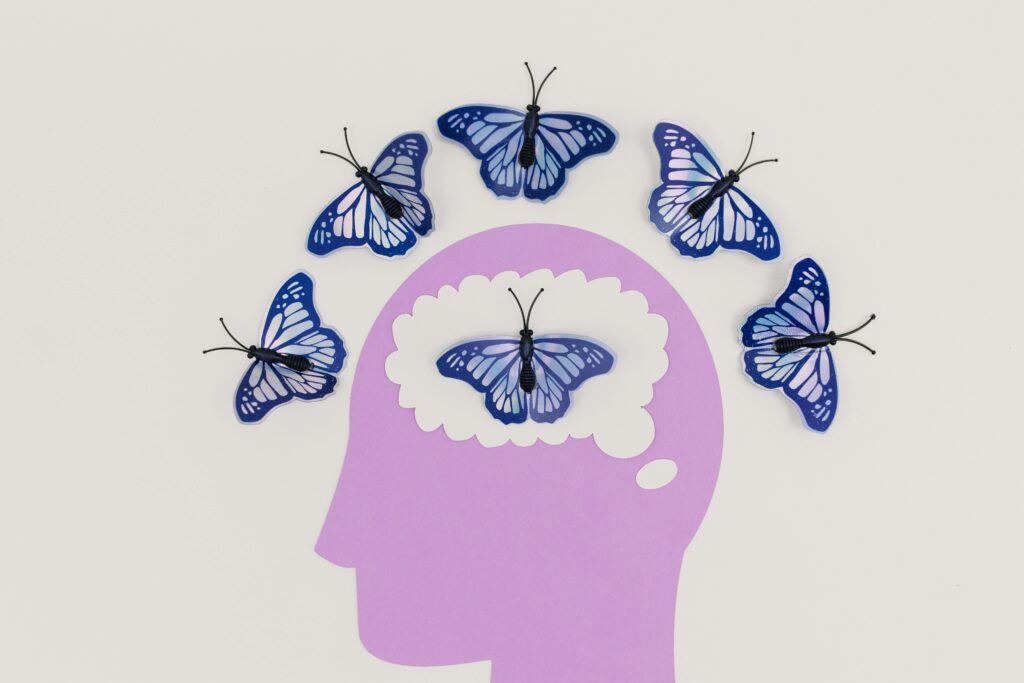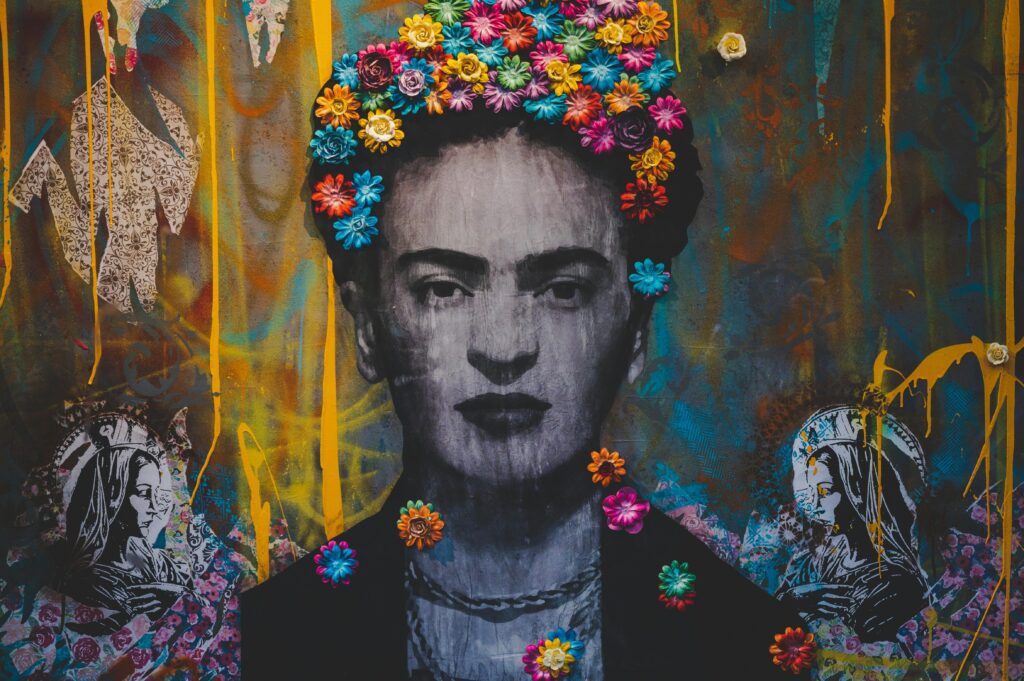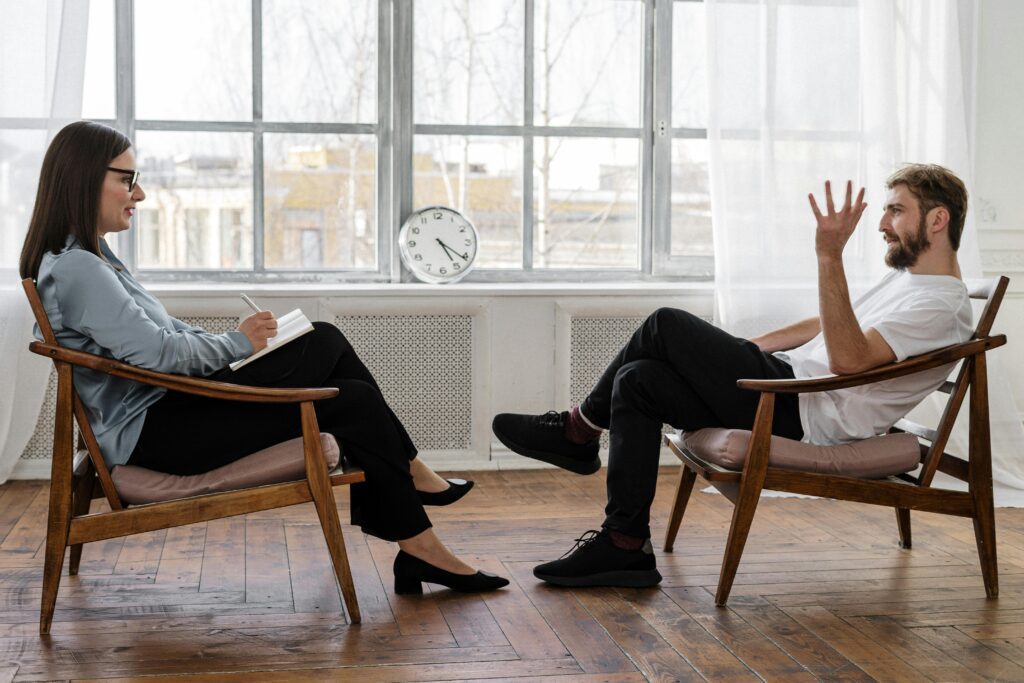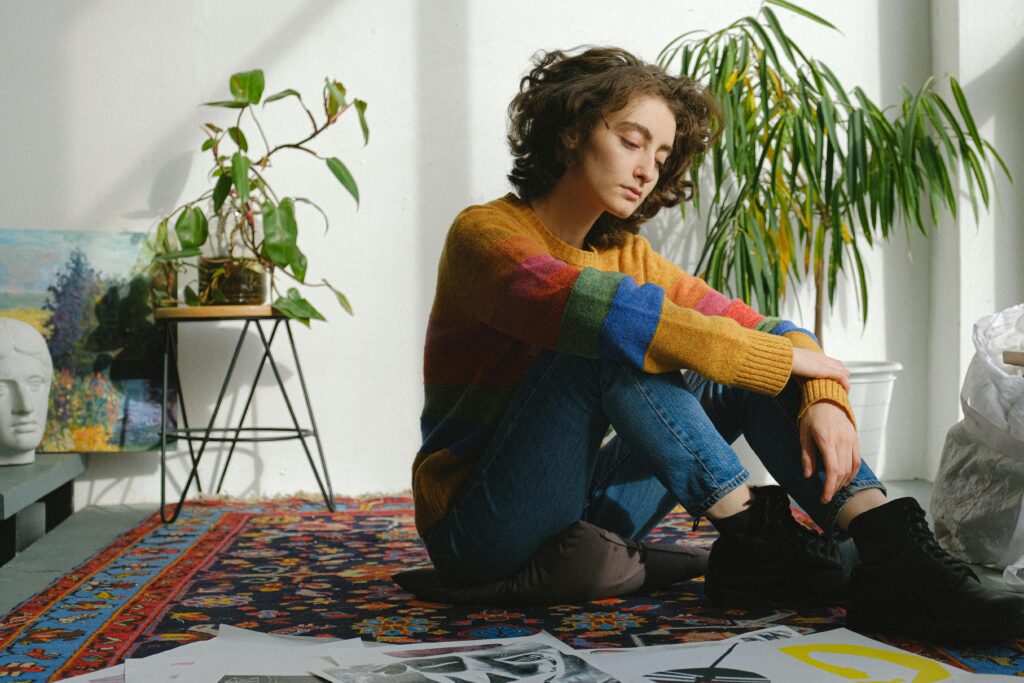Discover what is art block and how to navigate through this common creative obstacle in our in-depth guide. Gain insights from renowned artists’ experiences, explore effective short-term and long-term strategies to reignite creativity, and learn the importance of community support in artistic growth. Whether you’re facing a momentary challenge or seeking deeper understanding, this article is your compass to overcoming creative barriers and enhancing your artistic practice.
Introduction
Every creative journey encounters its share of obstacles, and one of the most formidable is the dreaded “art block.” Art block refers to a period when an artist finds themselves unable to create, lacking inspiration, or feeling creatively stalled. This phenomenon isn’t just limited to visual artists; writers, musicians, and creators of all types can find themselves facing this frustrating hurdle.
At its core, art block is a complex blend of emotional, psychological, and circumstantial challenges that can cloud an artist’s vision and dampen their creative sparks. It’s a common experience that many creatives will face at some point in their careers. Understanding that you’re not alone in this experience can be comforting and a vital first step in overcoming the block.
In this article, we’ll dive deep into what art block really is, explore the factors that contribute to it, and debunk some of the myths surrounding it. More importantly, we’ll arm you with a variety of strategies and insights from fellow artists and experts to help you break through the creative barrier. Whether you’re a seasoned artist or a beginner, understanding and overcoming art block is crucial to maintaining a fulfilling and productive artistic practice. Let’s start by understanding the various dimensions of art block in the next section.
Understanding Art Block
How Art Block Manifests in Creatives
Art block manifests in various ways, and its symptoms can range from mild to severe. For some, it appears as a lack of motivation to start new projects or the inability to finish ongoing ones. Others may find themselves dissatisfied with every attempt at creation, leading to frustration and a cycle of self-doubt. This can result in prolonged periods where no art is produced at all, or where the creative process feels more draining than enjoyable.
Psychological and External Factors Contributing to Art Block
The roots of art block often lie in a mix of psychological and external factors:

- Psychological Factors:
- Perfectionism: Many artists struggle with the desire for perfection, which can halt progress before it even begins.
- Fear of Failure: The anxiety about not meeting expectations, whether one’s own or those perceived from others, can paralyze creativity.
- Mental Health Issues: Conditions such as depression or anxiety can significantly hinder the ability to create.
- Overwhelm and Burnout: Continuous work without adequate breaks can lead to creative burnout, a significant contributor to art block.
- External Factors:
- Environmental Stagnation: Working in the same space without change can stifle creativity.
- Lack of Inspiration: Not experiencing new sights, sounds, or experiences can lead to a drought of creative ideas.
- Pressure and Deadlines: External pressures, either from clients, financial stress, or self-imposed deadlines, can create a counterproductive stress environment.
- Comparisons with Others: Social media and constant exposure to other artists’ work can lead to unhealthy comparisons, lowering self-esteem and creative output.
Common Myths and Misconceptions About Art Block
- “Only amateur artists experience art block.” This is far from true. Artists at all levels of their career, from beginners to seasoned professionals, can experience art block. It does not discriminate based on skill level or experience.
- “Art block means you’re not a real artist.” On the contrary, many well-known artists have spoken about their periods of creative drought, emphasizing that art block is a normal part of the creative process.
- “You should just push through art block by continuing to work.” While sometimes effective, this approach can often lead to further frustration and burnout. It’s important to recognize when taking a step back to refresh and recharge might be more beneficial.
By understanding how art block manifests and the factors contributing to it, artists can begin to identify personalized strategies that address their specific situation. In the next section, we will explore various methods and strategies that artists have found useful in overcoming their creative hurdles.
Personal Stories: Voices from the Art World
Anecdotes from Various Famous Artists About Their Experiences with Art Block
Many renowned artists have navigated through the murky waters of art block, emerging with new insights and approaches to their craft. Their experiences offer valuable lessons for anyone struggling to find their creative path.

- Frida Kahlo: After suffering severe injuries from an accident, Kahlo faced long periods of immobilization during which she felt intense creative frustration and isolation. Her physical pain and emotional struggles often led to creative blocks, which she overcame by channeling her emotions into her paintings, turning her adversity into a profound artistic expression.
- Leonardo da Vinci: Known for his meticulous nature and relentless pursuit of knowledge, da Vinci often left projects unfinished, plagued by self-doubt and perfectionism. His journals reflect periods of deep frustration, where he questioned his capabilities, showing that even geniuses experience creative uncertainties.
- Georgia O’Keeffe: Famous for her vivid floral paintings, O’Keeffe experienced significant creative dry spells, particularly as she aged and faced health issues. She spoke openly about the fear and anxiety these blocks instilled in her, yet she continually found rejuvenation in nature, which helped restore her creative spirit.
- Chuck Close: Despite facing severe adversities, including a spinal artery collapse that left him paralyzed, Close adapted his artistic methods to fit his physical limitations. His experience underscores how physical and psychological barriers can precipitate art block and how altering one’s technique can provide a new avenue for creative expression.
How Art Block Impacted Their Productivity and Creativity
Art block impacted these artists in various ways, influencing not only their productivity but also the direction of their artistic expression.
- Shifts in Artistic Style and Medium: For some, like Close, overcoming art block meant adapting to new methods or changing their artistic style. This adaptability can lead to significant shifts in an artist’s work, sometimes opening up entirely new avenues for creativity.
- Periods of Low Productivity: Artists like Kahlo experienced bouts of low productivity, where output dwindled as they wrestled with their inner turmoil. These periods were often followed by bursts of intense creativity, suggesting that downtime can be a precursor to productive phases.
- Enhanced Depth and Complexity: For da Vinci and O’Keeffe, the introspection that came with overcoming art block often led to a deeper exploration of their subjects and themes. Their subsequent works displayed greater complexity and emotional depth, indicating that periods of struggle can enrich artistic expression.
These stories highlight that art block is a common experience among artists, regardless of their fame or the era in which they lived. By understanding that even the most celebrated artists have faced and overcome creative hurdles, emerging and established artists alike can find solace and inspiration. In the following sections, we’ll explore specific strategies to combat art block, drawing from the wisdom of these and other artists’ experiences.
Strategies to Overcome Art Block
Overcoming art block involves a blend of immediate actions and long-term strategies to rekindle creativity and sustain productive artistic practices.
Short-term Strategies
When you’re stuck in a creative rut, sometimes small changes can spark big breakthroughs. Here are some quick tips to help jumpstart your creativity:
- Change Your Environment: Sometimes, a new environment can stimulate the senses and provide fresh perspectives. Try working in a different room, at a local café, or even outdoors. The change in scenery can disrupt the stale energy associated with your usual creative space.
- Take a Break: It might seem counterintuitive when facing a deadline, but stepping away from your work can help clear mental clutter and reduce stress. Engage in activities that relax you, such as walking, meditating, or watching a movie. Often, the best ideas come when your mind is at ease and not focusing on producing.
- Engage in Different Forms of Art: If you primarily paint, try sculpting, writing, or playing music instead. Switching creative mediums can unleash new forms of expression and ideas, helping to bypass mental blocks associated with one specific medium.
Long-term Strategies
For sustainable creative health and to minimize future instances of art block, consider these long-term strategies:
- Develop a Consistent Creative Routine: Establishing a routine can help condition your mind to be ready for creativity at certain times of the day. Consistency reduces the mental energy spent on starting each creative session, making it easier to get into the flow state.
- Seek Inspiration Through Travel, Reading, and Other Hobbies: Regularly introducing new experiences into your life can fuel creativity. Travel exposes you to different cultures and ideas, while reading can expand your understanding and empathy—qualities that enhance artistic depth. Hobbies unrelated to your art can also provide unexpected insights and methods of problem-solving.
- Use Tools and Apps Designed to Boost Creativity: Numerous apps and tools are available to help manage creative projects, provide prompts, and organize thoughts. Digital tools like Trello or Asana can help with project management, while creative prompts apps can offer new challenges that spark ideas. Additionally, mind-mapping tools like MindNode or XMind can help in expanding a central idea into multiple sub-ideas and connections.
Incorporating these strategies into your artistic practice can not only help overcome current instances of art block but also equip you with the skills and habits to avoid future creative droughts. With a blend of immediate actions and sustained efforts, you can maintain a fruitful and satisfying creative journey. In the next section, we will delve into expert advice from psychologists and seasoned artists on navigating the complexities of creative blocks.
Insights from Psychologists on the Importance of Mental Health in Maintaining Creativity
Psychologists emphasize the significant role that mental health plays in fostering and maintaining creativity. Recent research in the field highlights several key points regarding this connection:
- Creativity as a Contributor to Psychological Well-being: Creativity is not just an outcome of having mental health issues but is also a potent contributor to psychological well-being. Engaging in creative activities can provide individuals with a sense of accomplishment, open them up to new experiences, and foster connections with others, which are all beneficial for mental health (Friedman, 2014).
- Mental Balance and Creativity: Mental well-being enhances creativity. The absence of severe mental health issues often correlates with an increased capacity for creativity. This relationship suggests that maintaining mental balance is crucial for creative outputs (Gillam, 2018).
- Creative Activities as Mental Health Interventions: Various forms of creative expression, such as art, music, and writing, can serve as effective interventions for improving mental health. These activities can act as therapeutic tools that provide not only a means of expression but also stress relief and a boost in self-esteem and mood (Leckey, 2011).
- Everyday Creativity and Mental Health: Even everyday creativity, which involves solving daily challenges in innovative ways, can promote psychological health and personal growth. This type of creativity encourages traits like openness, flexibility, and humor, which are significant for a healthy mental state (Cropley, 1990).
- Creativity in Professional Environments: Encouraging creativity in the workplace can lead to better mental health outcomes. Creative tasks can enhance an individual’s sense of control and fulfillment, contributing to better overall mental health and productivity (Mirowsky & Ross, 2007).
In conclusion, maintaining good mental health is crucial for fostering creativity. It enables individuals to engage more fully in creative processes, which in turn supports their mental well-being, forming a beneficial cycle that promotes both creativity and psychological health.
Community and Support
In the artistic journey, the role of community cannot be overstated. Engaging with a community offers support, fosters inspiration, and provides valuable networking opportunities that are crucial for both personal and professional growth.
Importance of Community in Artistic Growth
Artistic communities serve as vital hubs where creators can exchange ideas, offer and receive feedback, and support one another emotionally and professionally. These interactions often encourage personal development and can lead to collaborative opportunities that might not have arisen in isolation. Furthermore, community involvement helps artists stay informed about new trends, techniques, and tools, enriching their own artistic practices.
Online Forums and Local Groups Where Artists Share and Learn from Each Other
In today’s digital age, online forums and social media platforms have become indispensable for artists seeking community. Websites like DeviantArt, Behance, and Instagram allow artists to showcase their work and interact with peers from around the globe. Local groups, often found through social media or platforms like Meetup, provide physical spaces for artists to connect, collaborate, and participate in workshops or collective exhibitions.
Our Community: Planet of Disobedients
For those particularly interested in an engaged and active community, Planet of Disobedients offers a vibrant space for artists who challenge the status quo and embrace creative freedom. Our community is dedicated to supporting unconventional artists through discussion, mutual support, and shared growth. At Planet of Disobedients, members can participate in forums, access resources for creative and professional development, and join events that celebrate and inspire artistic rebellion.
How Mentorship Can Help Navigate Through an Art Block
Mentorship is another powerful aspect of community support. Having a mentor who has navigated the complexities of the creative process can provide guidance, motivation, and accountability. Mentors can offer constructive criticism, share experiences, and provide solutions that might help overcome art block. They act as sounding boards and advisors who understand the intricacies of the artistic journey.
Join Our Community on Discord
To further enhance interaction and real-time collaboration among our members, we invite you to join the Planet of Disobedients Discord server. This platform allows for immediate communication, regular updates on community events, and a supportive environment where members can share insights and ask for feedback anytime. Join us to connect with fellow creators who are ready to push the boundaries of art and creativity.
Join the Planet of Disobedients Discord Server
By leveraging the strength of community, artists can find not only camaraderie but also a rich reservoir of creativity and support to help navigate through challenging periods of art block. Engaging with a community like Planet of Disobedients can empower you to reach new heights in your artistic endeavors.
When to Seek Professional Help

While art block is a common experience for many creatives, sometimes it’s more than just a temporary creative rut. It can be a symptom of deeper psychological issues, such as depression or anxiety, which require professional intervention. Understanding when to seek help can be crucial for not only preserving one’s mental health but also one’s artistic productivity.
Identifying When Art Block is Linked to Deeper Issues
Art block becomes a concern when it is prolonged and accompanied by signs that might indicate mental health issues. Here are some indicators that art block may be linked to deeper psychological conditions:
- Persistent feelings of sadness or emptiness that don’t seem to go away, affecting daily functioning and creative expression.
- Loss of interest in activities once enjoyed, including art and creativity, which can signal depression.
- High levels of anxiety about one’s art or the creative process that lead to physical symptoms such as heart palpitations, shortness of breath, or panic attacks.
- Changes in sleep patterns, whether insomnia or sleeping too much, which can affect cognitive functions and creative processes.
- Feelings of worthlessness or excessive guilt, especially when an artist starts to doubt their abilities or the value of their work excessively.
- Difficulty concentrating, making decisions, or remembering things, which directly impacts an artist’s ability to create.
Resources and Professional Help Available for Artists
When these symptoms persist, it’s important for artists to seek professional help. Here are some resources and options for artists facing such challenges:
- Counseling and Therapy: Many therapists specialize in helping creative professionals and can offer tailored therapies based on an individual’s needs. Cognitive Behavioral Therapy (CBT) and Art Therapy are popular among creatives as they focus on overcoming cognitive distortions and expressing emotions through art, respectively.
- Support Groups: Joining support groups where other creatives share similar experiences can be beneficial. These groups provide a sense of community and understanding, and can be found through local clinics, hospitals, or online platforms.
- Online Mental Health Services: Platforms like BetterHelp and Talkspace provide access to mental health services through the internet, making it convenient for artists who might have irregular schedules or prefer the privacy of online counseling.
- Artistic Health Associations: Organizations such as The Artistic Minds Alliance or Artists’ Health Alliance often offer programs, workshops, and access to healthcare professionals who understand the unique pressures faced by artists.
- Consulting a Psychiatrist: In cases where depression or anxiety significantly impair an artist’s life, consulting a psychiatrist might be necessary to discuss the possibility of medication alongside therapy for effective treatment.
Recognizing the signs that art block is more than just a creative drought is essential for the well-being of artists. By understanding these signs and knowing when and where to seek help, artists can ensure they maintain not only their creativity but also their overall health and happiness. Taking steps to address these issues not only aids in overcoming art block but also contributes to a more sustainable and fulfilling creative life.
Conclusion: Embracing the Creative Process
Navigating through art block is a challenge that every creative faces at some point in their journey. This article has explored various dimensions of art block, from its manifestation and contributing factors to strategies for overcoming it and recognizing when it might be linked to deeper psychological issues.
Recap of Key Points:
- Understanding Art Block: Art block can manifest in different ways, including lack of motivation, dissatisfaction with one’s work, and even complete cessation of creative output. It is influenced by both psychological factors like perfectionism and fear of failure, and external factors such as environmental stagnation and overwhelming pressure.
- Strategies to Overcome Art Block: Short-term strategies like changing your environment, taking breaks, and experimenting with different art forms can provide immediate relief. Long-term strategies, including developing a consistent creative routine, seeking new inspirations, and utilizing digital tools, are essential for sustainable creative health.
- Community and Support: Engaging with communities, such as online forums, local groups, or specialized communities like Planet of Disobedients, provides vital support. Mentorship within these communities can also be a powerful tool in overcoming creative hurdles.
- Professional Help: Recognizing when art block is a symptom of a deeper issue, such as depression or anxiety, is crucial. Resources like therapy, support groups, and professional mental health services are available and beneficial for artists needing more significant intervention.
As creatives, it’s important to embrace the entire spectrum of the artistic process, including the inevitable highs and lows. Art block, while daunting, is merely a part of this journey. It is not a sign of failure but rather an opportunity for growth and self-discovery. By understanding its nature and equipping ourselves with effective strategies, we can navigate through these periods more effectively and emerge more resilient and creatively invigorated.
Let’s not fear art block. Instead, let’s approach it with curiosity and use it as a stepping stone to reach deeper levels of creative expression. Remember, every artist before you has faced this challenge and found ways to overcome it. You are no different. Embrace the process, lean on your community, and don’t hesitate to seek help when needed. Your next artistic breakthrough could be just around the corner.


Pingback: How to Get Past Art Block in 5 Simple Steps - Planet of Disobedients
Pingback: How Popular Artists Define Art Block - Planet of Disobedients
Pingback: Mastering Time: Essential Time Management Strategies for Artists - Planet of Disobedients